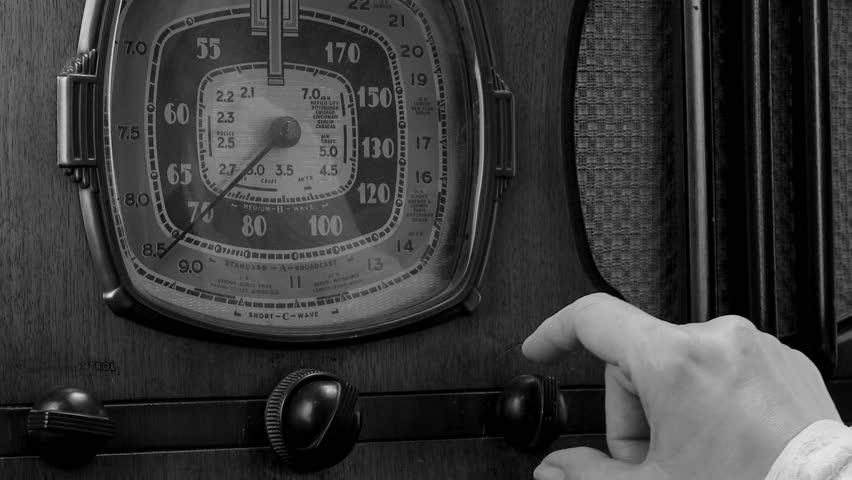MusicMaster Blog
TEMPO vs. MOOD posted on November 13th, 2017
By Jesus Rodriguez
Let’s talk about Attributes! Attributes are the codes you can give to a song to define its Gender, Genre, Era, etc.
Specifically let’s talk about Tempo and Mood attribute codes. As obvious as it may seem to what the difference is between these two, you would be surprised at how easily the lines are blurred. I get calls at times asking why so many slow songs are playing next to each other or sad songs playing next to a slow song. The common mistake is that many music schedulers use Tempo Slow as Sad rather than the speed of a song. For some reason the misconception is that if it’s a slow song it must be a sad song. So, in their head they hear a slow beat as they are coding and give a happy slow track a slow tempo code based on the assumption that if it’s slow it must be sad. However, not all slow songs are sad songs and this can also be the case with up-tempo dance songs that have a sad message about a break up for example. My best examples are urban records right now. There are many are in the 60-80 BPM range (Beats Per Minute) but they are not sad songs. Just listen to the lyrics or better yet go to a nightclub and see the crowd react to the hot new Drake record that is 71 BPM.
I notice that many music schedulers never consider also using Mood. Those same people are the first to say, “That station has a really bad tempo issue!” Maybe it’s never been a tempo issue at all but a mood issue.
Here is my solution to help your station flow better. Lets start using both Tempo and Mood attribute codes right away. If you don’t have one or either of these contact your Music Scheduling Consultant so we can add a field for it. You can create your attribute codes by going to Dataset, Library, Attributes.
First, get out of the mindset of assigning tempos based on feelings like sadness. If you have a hard time being disciplined and not letting your feelings get in the way of what you hear in your head when coding, download a free BPM counter app. This way you can get the actual speed of the song in beats per minute. We can’t change the Slow, Medium, or Fast tempo of the song so stick to what tempo truly is: a speed not a mood.
Now also code those songs based on Mood only! You have to get your mindset out of thinking speed and truly engage on the feeling the song gives you when it comes on the radio. For this example, we’ll keep it simple. Is the song Sad, Happy, or Exciting. When picking the mood of the song I like to think about how people react to the lyrics or rhythm while in their car or even at a nightclub. Is it going to make them drive off a cliff because it’s sad when they’ve had a terrible day? Is it a good listening, happy song for everyday leisure? Is it an exciting song I play at the club that packs the dance floor? I then code my mood accordingly based on feelings alone not tempo.
This is all great but how do we use these together if we’re no longer using Tempo to define both the speed and the way the song makes us feel? Well now that we have both Tempo and Mood defined on every song we can set up some basic rules to keep Tempo Slow songs from playing to close to each other or even back to back. We can do the same for Mood when it comes to sad songs or in reverse if we don’t want the station to be to uplifting.
Are we in agreement now that not all slow songs are sad? If so your stations mood will be better balanced because you can now have a Tempo Slow/Mood Exciting song like the new Drake that’s 71 BPM go right into an up-tempo song with sad lyrics to help pick up the pace rather than two slow tempo songs one of which you labeled as sad but was really happy back-to-back. When you play an actual sad song your mood rules can kick in to uplift the feelings of the listeners instead of back-to-back sad songs on a day they just got dumped by the person of their dreams.
Just remember that the next time someone says your station has a tempo issue, what may really be going on is a mood issue because it’s not being utilized. Ask them these same questions so you’ll have a better idea of what to adjust.
Call your Music Scheduling Consultant if you have any questions.
Coding Music: Make It Your Own! posted on July 17th, 2017
By Drew Bennett
When I was young and just learning to program a day’s music log, my main issue was not being aware of what I needed to know about the music I was scheduling. Sound codes, Mood, Tempo, Type and Texture were mostly foreign to me. I can sit here and remember working on the DOS-based version of MusicMaster at KNNC in Austin, TX and thinking back then, “I guess I’ll just schedule this music the way the other guy showed me and then fill in these unscheduled positions and…done.” I bought my first PC in 1997. I got serious with learning about computers and the software I used at work every day. A majority of my time was spent reading the MusicMaster-DOS manual and that began my journey toward a passion for the science and art of music scheduling. Sound codes, Mood, Tempo, Type and Texture became my main daily focus. As a result, I listened to music differently than ever before.
My point is that I began to pay attention. I developed a personal sense of music and what made songs slow or fast, pop or rock, etc. I have my own opinions about what constitutes a sad song or a happy one. You do too. That personal sense of attributes that apply to a song needs to be in your music library if you program a radio station. If you landed a new job as the PD or MD of a heritage station in your favorite city, what would you do with the music when you got there? It might also be a good idea to ask what the last guy did with the music when he got there, too. How many programmers have touched this database in the last few years? Who uses this database day-to-day? Does a consultant have access to it? Do they make changes? These are big questions you should ask when you walk into a new situation at a radio station. You’d be surprised to learn that these questions are rarely asked by programmers and many times, databases are filled with data that’s been inputted by the last four or five programmers that worked at the radio station.
When you are tasked with a new job of scheduling music at a radio station, your first line of business after filling out a direct deposit form is to get into the database and make it your own. Take the bold move of wiping out every attribute in each song card and start over. If “Faithfully,” from Journey is a slow song, you need to have been the one who decided that and coded the song. If you do not, you are relying on the opinions of others to program your radio station. It’s as if someone is living with you in your own house! Perhaps not, but it is bad data. It is not yours and it could affect your music logs in a negative way.
To remain consistent with your music, it is a good idea to keep a one-sheet about your database. In that document, list coding examples in song cards and helpful notes about clocks or other areas you might use like Gold Recycling.
Slow Tempo = “Vision of Love” – Mariah Carey.
Rock = “New Sensation” – INXS.
“We use Migrating Positions during the afternoon to keep variety in the quarter hour between our ’60s category and our ’90s category.”
“Category P uses Gold Recycle. We pick up at 9am for 8 hours and we drop off at Midnight for 5 hours.”
You will save time exploring the software if your notes are thorough and you will help programming assistants and/or consultants get around the data if they need to review your work.
Making the database your own by coding every record yourself and keeping notes about your database for quick reference is the best way to keep good data and a tight ship in the programming department. Here are some extra tips to consider as you get started:
Clone your existing database and make your changes there. That way, you can keep a music log going in the original data and you can trade the old data for the new data when you are done. The idea that you can make mistakes in copied data is also a plus. Once you are done re-coding the data, think about a review of your rules and how they may need to be changed to adapt to new coding.
Happy scheduling!
Scheduling Intros with Segue Protection posted on March 25th, 2011
By Paul Ziino
Lots of MusicMaster customers use Segue Protection rules to make sure slow songs don’t segue into fast songs or to prevent female artists from playing back-to-back. But have you ever considered using Segue Protection to match the talk-over times to the appropriate song intros? This is the question we get:
“I have a song with a 12 second intro. I want to make sure that the imaging piece before it will go over the ramp of the song and meet the post. Is that possible?” (more…)
Attribute Time and Title Separation posted on September 27th, 2010
by Paul Ziino
When you open your Rule Tree (Dataset/Rule Tree or click the Lightning Bolt icon on your Toolbar), you open a world full of possibilities. Today we look at a couple rules found under each code within your “Attribute Field Rules”. (more…)
Changing it up for Summer! Seasonal Psychology posted on May 7th, 2010
By Marianne Burkett
Summer is coming and thoughts of warm afternoons at the park, pool or beach start circling your brain. You can’t wait. What you’re wondering right now is should you adjust your station programming to reflect the psychology of the season? Is that going to cause you hours of agonizing work in editing logs, or can you easily adjust your rules to force those summer fun songs into each hour? (more…)


